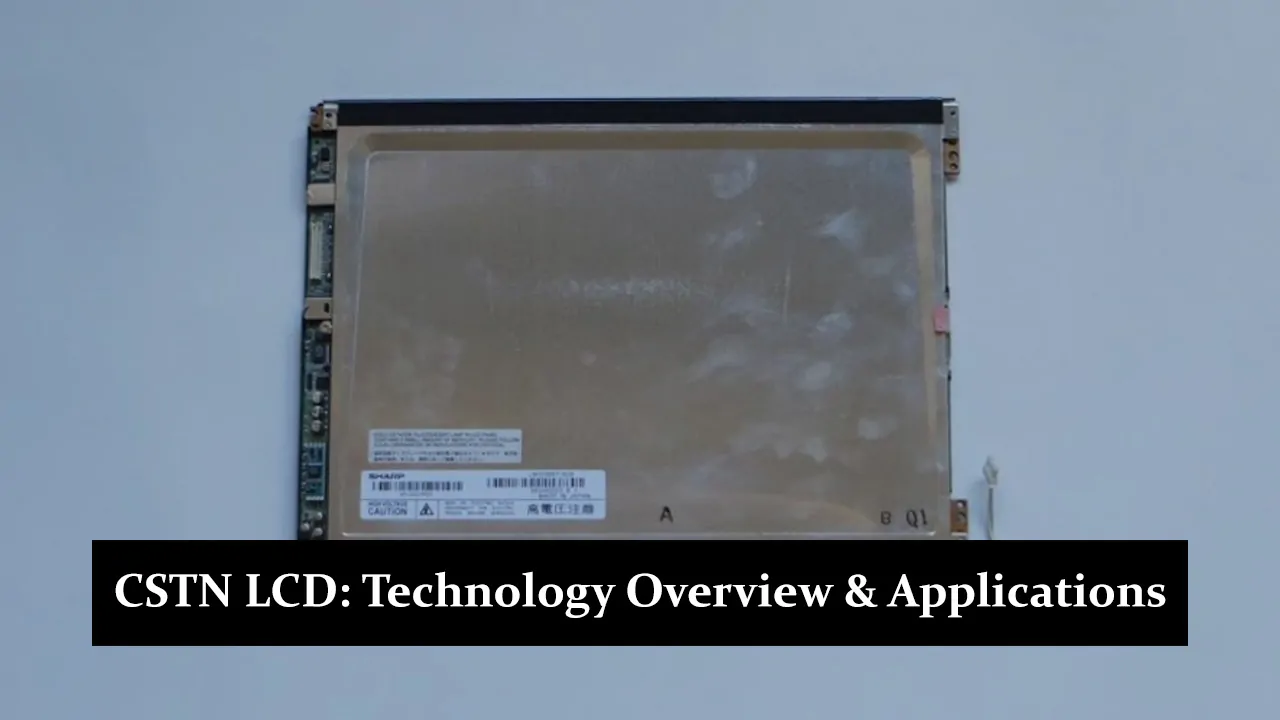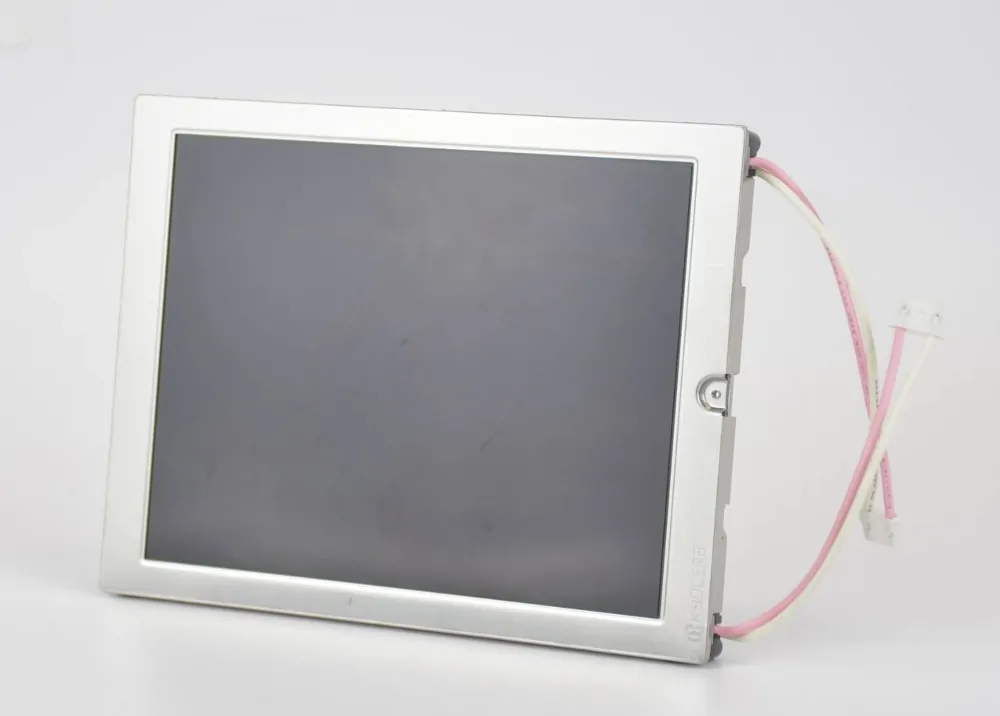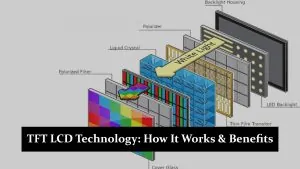LCD (Liquid Crystal Display) technology is widely used in various devices, including televisions, smartphones, and computer monitors. It works by manipulating liquid crystals between two polarising filters to control the passage of light and display images. Different types of LCDs include TN (Twisted Nematic), TFT (Thin Film Transistor), and CSTN (Color Super Twisted Nematic), each offering unique benefits. CSTN LCDs, a variation of STN, use super-twisted nematic crystals to produce colour displays with improved viewing angles and lower power consumption. CSTN is more cost-effective than TFT but has slower refresh rates and lower brightness.
History of CSTN LCD
CSTN (Color Super Twisted Nematic) technology was developed in the early 1990s to refine the earlier STN (Super Twisted Nematic) displays. Initially, CSTN displays were used in low-power devices like early mobile phones and PDAs, offering a cost-effective alternative to more expensive display technologies. Over time, CSTN evolved from monochrome displays to full-color versions, allowing for more versatile applications. The improvements focused on enhancing colour reproduction, viewing angles, and power efficiency. This evolution allowed CSTN displays to become popular for devices requiring colour display and energy conservation.
How CSTN LCD Works
Basic Principles of CSTN LCD
CSTN (Color Super Twisted Nematic) displays operate by controlling the alignment of liquid crystals between layers of glass, which twist in response to electrical signals. This twisting effect manipulates the passage of light through polarisers to create images. The main difference between STN and CSTN is that while STN displays are monochrome, CSTN adds colour by incorporating colour filters, enabling multi-colour displays. CSTN also improves viewing angles and colour stability compared to basic STN.
Colour Generation Mechanism
CSTN produces colour displays using a matrix of red, green, and blue (RGB) filters placed over the liquid crystal layer. By controlling the voltage applied to each pixel, the crystals align in various ways, allowing light to pass through specific RGB filters and create different colours. However, CSTN has lower refresh rates and colour depth than technologies like TFT, resulting in slower screen updates and less vibrant colours.
Key Components of CSTN LCD
- Liquid Crystal Layers: Twisted liquid crystals that change orientation in response to voltage, controlling light passage.
- Polarisers: Filters that allow only specific light waves to pass through, essential for image formation.
- Colour Filters (RGB): Red, green, and blue filters are placed over pixels to create a range of colors.
- Backlighting: A light source behind the screen that illuminates the display, enhancing visibility.
- Electrical Control Circuits: Systems that apply voltage to specific pixels, managing the alignment of the liquid crystals and the overall image display.
CSTN vs. Other Display Technologies
| Feature | CSTN (Color Super Twisted Nematic) | TFT (Thin Film Transistor) | OLED (Organic Light Emitting Diodes) |
| Brightness | Lower brightness, suitable for basic applications | Higher brightness, better for outdoor usage | Very high brightness, self-emitting pixels |
| Contrast | Lower contrast | Moderate contrast | Very high contrast due to true blacks |
| Colour Reproduction | Limited colour depth, less vibrant | Better colour reproduction, more vibrant | Excellent colour reproduction, vivid colours |
| Refresh Rates | Slower refresh rates, not suitable for fast-moving content | Faster refresh rates, suitable for video and gaming | Fast refresh rates, ideal for video and gaming |
| Power Consumption | Very low, energy-efficient for simple displays | Higher power consumption | Low to moderate, but depends on usage |
| Cost | Low-cost, affordable for budget devices | Moderate to high-cost | Higher cost due to advanced technology |
| Image Quality | Lower image quality, less sharp | Higher image quality, sharper images | Excellent image quality with deep blacks |
| Viewing Angles | Wider viewing angles compared to early STN displays | Moderate viewing angles | Wide viewing angles with minimal distortion |
| Performance in Sunlight | Poor visibility in bright sunlight | Better performance in sunlight | Excellent sunlight readability |
| Durability | Durable, but lower resolution | Durable and widely used in rugged devices | Can degrade over time with burn-in risk |
Key Advantages of CSTN LCD
- Low Power Consumption: CSTN displays consume less energy than TFT and OLED because they require less power to control the liquid crystals and do not need complex circuitry like TFT or power-intensive lighting like OLED. This makes CSTN ideal for battery-powered, low-power devices.
- Cost-Effective Manufacturing: CSTN displays are cheaper than TFT or OLED displays, as they do not require the same intricate components or technology. This makes them a cost-effective option for devices that need basic displays without high image quality demands.
- Wider Viewing Angles: CSTN technology offers wider viewing angles than traditional TN and early STN displays. This makes the display easier to view from different angles without significant colour distortion, enhancing the user experience for basic applications.
Limitations of CSTN LCD
- Lower Refresh Rates: CSTN displays have slower refresh rates than technologies like TFT and OLED. This makes them less suitable for fast-moving content, such as video playback or gaming, where high refresh rates are necessary for smooth visuals.
- Lower Color Quality and Brightness: CSTN struggles to achieve high brightness and vibrant colour accuracy in other displays like TFT and OLED. The colour depth is limited, and the brightness is often insufficient for outdoor use or environments with bright light.
- Response Time and Motion Blur: CSTN displays have slower response times, which can lead to motion blur, especially when displaying dynamic content. This makes them less ideal for applications where fast image transitions are important, such as action-packed videos or gaming.
Applications of CSTN LCDs
- Devices: CSTN technology was widely used in early mobile phones, PDAs, and handheld gaming devices due to its low power consumption and cost-effective production. These devices benefited from the basic colour displays provided by CSTN while maintaining long battery life.
- Wearable Devices and Small Displays: CSTN is also found in small, low-power devices like smartwatches and fitness trackers, where energy efficiency is a priority. Its ability to deliver sufficient display quality without draining battery life makes it ideal for wearables.
- Other Low-Power Electronics: CSTN technology is well-suited for low-power devices such as calculators, e-readers, and basic control panels, where extended battery life is essential and high-resolution displays are not necessary. Its power-saving capabilities make it ideal for these applications.
Conclusion
CSTN displays offer significant advantages such as low power consumption, cost-effective manufacturing, and wider viewing angles, making them suitable for low-power and budget devices like mobile phones and wearables. However, they are limited by slower refresh rates, lower brightness, and colour quality compared to more advanced technologies like TFT and OLED. While CSTN’s relevance has declined in modern high-performance devices, its energy efficiency and affordability still make it a viable option for certain low-power applications where advanced display quality is not a priority.



